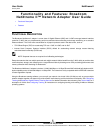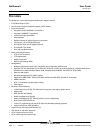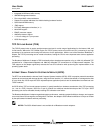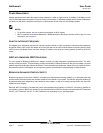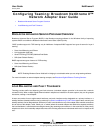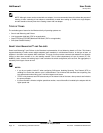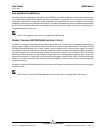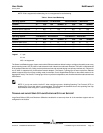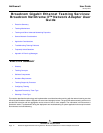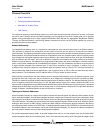
NetXtreme II User Guide
January 2010
Broadcom Corporation
Page 10 Load Balancing and Fault Tolerance Document ENGSRVT52-CDUM100-R
NOTE: Although a team can be created with one adapter, it is not recommended since this defeats the purpose of
teaming. A team consisting of one adapter is automatically created when setting up VLANs on a single adapter,
and this should be the only time when creating a team with one adapter.
TYPES OF TEAMS
The available types of teams for the Windows family of operating systems are:
• Smart Load Balancing and Failover
• Link Aggregation (802.3ad) (TOE is not applicable)
• Generic Trunking (FEC/GEC)/802.3ad-Draft Static (TOE is not applicable)
• SLB (Auto-Fallback Disable)
SMART LOAD BALANCING™ AND FAILOVER
Smart Load Balancing™ and Failover is the Broadcom implementation of load balancing based on IP flow. This feature
supports balancing IP traffic across multiple adapters (team members) in a bidirectional manner. In this type of team, all
adapters in the team have separate MAC addresses. This type of team provides automatic fault detection and dynamic
failover to other team member or to a hot standby member. This is done independently of Layer 3 protocol (IP, IPX,
NetBEUI); rather, it works with existing Layer 2 and 3 switches. No switch configuration (such as trunk, link aggregation) is
necessary for this type of team to work.
NOTES:
• If you do not enable LiveLink™ when configuring SLB teams, disabling Spanning Tree Protocol (STP) or
enabling Port Fast at the switch or port is recommended. This minimizes the downtime due to spanning tree
loop determination when failing over. LiveLink mitigates such issues.
• TCP/IP is fully balanced and IPX balances only on the transmit side of the team; other protocols are limited to
the primary adapter.
• If a team member is linked at a higher speed than another, most of the traffic is handled by the adapter with the
higher speed rate.




